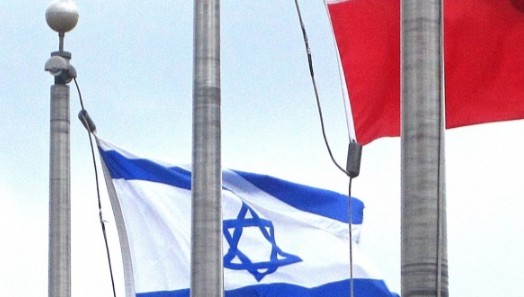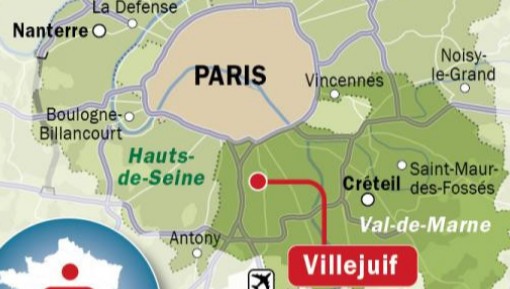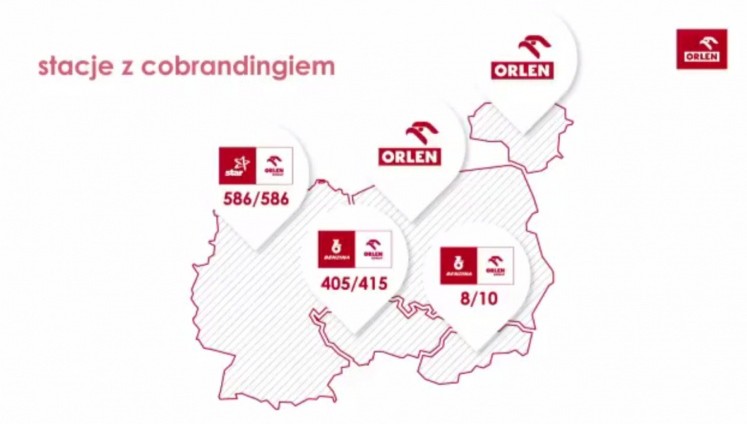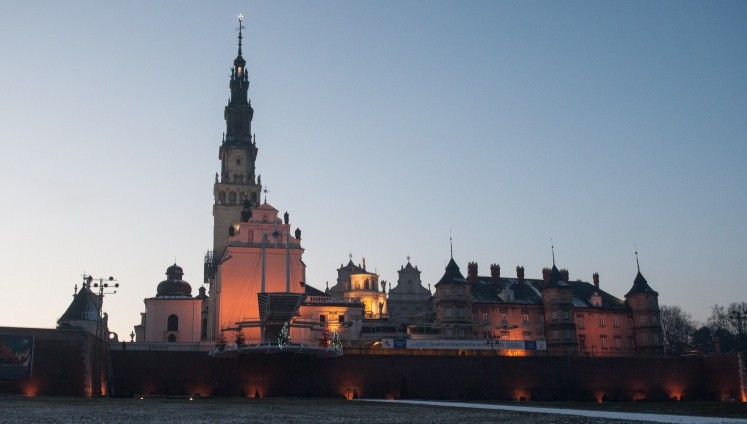The Polish ski jumper Dawid Kubacki continues to perform well in the classic Four Hills tournament which consists of 4 World Cup events, 2 in Germany and 2 in Austria. Kubacki ended up second in the third event which took place today in the Austrian city of Innsbruck. Kubacki managed to jump a whopping 120 and a half meters despite unfavorable wind conditions. Today’s result means that Kubacki leads the Four Hills tournament ahead of the Norwegian Marius Lindvik. The fourth and final World Cup event will take place on January 6th.
Trump: We wanted to prevent war
US President Donald Trump said the attack which killed Kasem Sulejmani, head of the Iranian elite force Al-Quds, was to prevent a war. During a Florida press conference, Trump said Sulejmani was planning violent attacks on US diplomats and military personnel. The US president assured that the Iranian general was behind the December attack on the American embassy in Iraq.
Funeral ceremony of the Iranian major general in the Islamic Revolutionary Guard Corps-Kasem Sulejmani
Hundreds of thousands of people participated today in the funeral ceremony of the Iranian major general in the Islamic Revolutionary Guard Corps, Kasem Sulejmani, who was killed in a US air strike on Friday. The funeral was held in the capital of Iraq and quickly turned into an anti-American demonstration. Sulejmani was the commander of an elite army unit, the Quds Force, and was responsible for the majority of Iranian military operations in the Middle East.
”What you have seen today during this funeral are social and mass activities, aiming to reject the American presence. Tomorrow, we will have an official stance as political blocs, rejecting the foreign interference. What has been done by the United States is a violation of all international, political and diplomatic norms. We as the Iraqi people should have a stance against such violations”- says Naeem Al-Aboudi, lawmaker.
Kasem Sulejmani – an Iranian general and a commander of an elite unit, the Quds Force, and one of the commanders of pro-Iranian police, Abu Mahdi al-Muhandis, were killed on Thursday night at the international airport in Baghdad. The US authorities have confirmed that they are responsible for the attack.
The US services have been following Sulejmani for several days, informing President Trump about the details and pointing out that the best chance to assassinate him will be near the airport. The US President gave the final permission to conduct the operation a few hours before it began from his golf resort in Florida.
Will the Polish president go to the World Holocaust Forum in Israel?
The Polish president, Andrzej Duda, will most likely not attend the World Holocaust Forum in Israel, which will begin on January 23rd at the Yad Vashem Institute in Jerusalem. According to Gazeta Wyborcza daily newspaper, it is unacceptable for Poland that one of the main speakers at the forum is to be the President of Russia, who has recently made offensive statements about Poland, in which he ascribed shared responsibility to Poland for the outbreak of World War II and accused for anti-Semitism. The Forum Coordinator at the Yad Vashem Institute is Israel Katz, the current Israeli Foreign Minister, infamous for his aggressive anti-Polish statements.
Today, Gazeta Wyborcza announced that President Andrzej Duda will not appear in Israel at the Fifth Holocaust Forum. During the event, which this year is dedicated to the 75th anniversary of the liberation of the German Auschwitz concentration camp, the main speaker is to be Russian president Vladimir Putin.
”No such decision has been made. Talks have been underway with the Israeli side since autumn. We presented our expectations as to the course of these ceremonies, including how we see the role of the Polish president. Some of these expectations have already been met. This weekend, the Polish ambassador to Israel, Marek Magierowski, will hold talks on this topic. Ultimately, we will see how the Israeli side will be able to clarify these matters. If our expectations are not met, the president will not go. The scenario in which Putin is the main guest speaker in Yad Vashem gives him the opportunity to continue his offensive and untruthful statements about the course and causes of World War II and that is unacceptable to us”- says Krzysztof Szczerski,Head of the Chancellery of President Andrzej Duda.
The point of contention is the structure of the event with which Poland does not agree. President Andrzej Duda would not have the opportunity to speak, and the celebrations at Yad Vashem are treated as an alternative to the celebrations at Auschwitz on January 27th. The main speakers at the Holocaust Forum are to be President Putin and President of Israel Reuwen Riwlin. The organizer of the event is the head of the Israeli Ministry of Foreign Affairs Israel Katz, known for his aggressive anti-Polish statements.
”I agree with the president. The most important thing is that we would celebrate this anniversary here. Secondly, I think it is good that the president does not play along with Putin’s ideas”- says Piotr Zgorzelski, Deputy speaker of the Parliament, Polish People’s party.
The official decision regarding President Andrzej Duda’s visit to Jerusalem is to be made within a few days. The forum at the Yad Vashem Institute will take place on January 23.
Victims of a man with a knife near Paris
French police shot a man dead near Paris after he went on a rampage with a knife in a park. The assailant killed one person and wounded two more.
The attack happened in the town of Villejuif , about 8 km south of central Paris. The deputy head of the French Ministry of Interior said police personnel were able to quickly neutralise the assailant.
”At this time, I would like to salute the quick response of Paris police personnel, especially the personnel of the anti-crime brigade of this area, who intervened very quickly. This allowed the assailant to be neutralised immediately, preventing him from pursuing murderous rampage. This is an extremely courageous act, showing great responsiveness”- says Laurent Nunez, Deputy Minister of Interior of France.
The two injured victims are being treated in nearby hospitals. Laure Beccuau, the prosecutor whose office is handling the case, said witnesses were being interviewed to establish what happened. She declined to disclose details about the attacker.
”There were three victims – one dead, and two other people are still being examined in different hospitals in the Val-de-Marne department. The perpetrator was also gunned down. What we know at the moment is that in his murderous rampage, the perpetrator attempted to attack other victims, who were able to evade him”- says Laure Beccau, prosecutor for the City of Creteil.
In the past four years, the French capital has been rocked by major attacks resulting in mass casualties. In October last year, four people were stabbed to death at the Paris police headquarters by an IT specialist working for the police. Additionally, coordinated bombings and shootings by Islamist militants in November 2015 at the Bataclan theater and other locations around Paris killed 130 people in the deadliest attacks in France since World War II.
Central Transportion Port will start operating at the end of 2027
The first flights from the Polish Central Transportion Port (CPK) are planned for the end of 2027, the Government Commissioner for CPK, Marcin Horala, said to Rzeczpospolita on Friday, adding that the government will do everything to meet this date.
CPK (Centralny Port Komunikacyjny) is a greenfield project located in central Poland, between Warsaw and Łódź, and aims to integrate air, rail and road transport. “This is a very ambitious schedule. (….) Everything should be going very smoothly, with no delays, if the date is to be achieved,” he underlined quated by PAP. Asked about the estimated cost of the project, Horala answered that “it is now being evaluated at PLN 25 billion (EUR 5.9 billion).” “Of course, this sum may be slightly modified as the project progresses,” Horala said.
Quit smoking in the new year
The new year should be a good opportunity to stop smoking. Taking care of your health is the best we can do for ourselves. The use of e-cigarettes is treated by young people as less risky, but studies do not confirm this.
The spokesman for the Chief Sanitary Inspectorate (GIS – Główny Inspektorat Sanitarny) noted that more and more people in Poland smoke e-cigarettes. This form of smoking has gained the most popularity among young people in recent years. He appealed to parents to warn their children and inform them about the dangers, which can be very serious. E-cigarettes are as addictive and have a negative impact on health as traditional cigarettes. According to data provided by GIS, the number of Polish teenagers who have tried e-cigarettes has increased sixfold since 2011. 30 percent pupils aged 15 to 19 regularly smoke electronic cigarettes, and 60 percent tried them at least once.
Orlen logotype at foreign stations of the company
The Orlen Group logotype is already present at all 586 fuel stations in Germany, as well as at 405 out of 415 stations in the Czech Republic and 8 out of 10 stations in Slovakia operating under the Benzina brand. A test station is being built near Berlin exclusively under the Orlen brand – PKN Orlen announced.
The group noted that its activities are aimed at full rebranding of the network on foreign markets. As announced by PKN Orlen, the next step in this direction will be the launch of a test station under the Orlen brand, which is being built in Seeberg-Ost near Berlin, at highway 10. “The station will operate in Stop Cafe 2.0 format. This means that its customers will be able to take advantage of the full gastronomic offer, including hot dishes, e.g. burgers, casseroles, hot dogs, as well as coffee, freshly squeezed juices and a wide range of food products. The opening of the station is planned for March 2020. ” – the company announced.
Polish dockers decide to unload bulk carrier
The unloading of the remaining amount of zinc concentrate from a 180-meter-long bulk carrier from Hong Kong, berthed at the port of Szczecin, began on Friday after firefighters announced that gas concentration standards had not been exceeded.
“Some 1,500 tonnes of zinc concentrate are still to be unloaded. The entire operation should take around 24 hours,” PAP was told by a spokesperson of the Szczecin and Swinoujscie Ports. The spokesperson added that “harbour fire brigades, which have been monitoring the situation,” announced that “permissible gas concentration norms have not been exceeded.” The Lintan bulk carrier arrived in Szczecin (north-western Poland) on December 18 from Salalah, Oman, carrying zinc concentrate. Such shipments have been quite regular in Szczecin for years but this time the situation looked different, the daily Gazeta Wyborcza wrote. “This is a dangerous situation since the cargo has likely become wet and has started to emit hydrogen. And this means that there is a risk of explosion,” the daily reported, adding that, according to unofficial information, the holds have been filled with gas in order to remove oxygen and eliminate the factor leading to fire and explosion.
4.4 million pilgrims in Jasna Góra in 2019
4 million 400 thousand pilgrims visited Jasna Góra in 2019. It is 100 thousand more than a year ago, the press office of the monastery reported. According to statistics, the number of pilgrims who come to Częstochowa on foot is increasing.
In 2019 over 752 thousand people took part in 190 national pilgrimages to Jasna Góra. The most numerous pilgrimages are: Family of “Radio Maryja”, motorcyclists, pilgrimage Renewal in the Holy Spirit, anonymous alcoholics, farmers, Pilgrimage of Work People, the Living Rosary Circle and the School of John Paul II. As many as 300 pilgrimage pilgrims came to Jasna Góra, in which 133 thousand people participated. “It is worth to note that the sanctuary also visited: over 11 thousand people on bicycle pilgrimages, 413 people on cross-country pilgrimages, 25 uhlans in horse pilgrimages and 181 people on roller skates “- the Jasna Góra Press Office reported.










